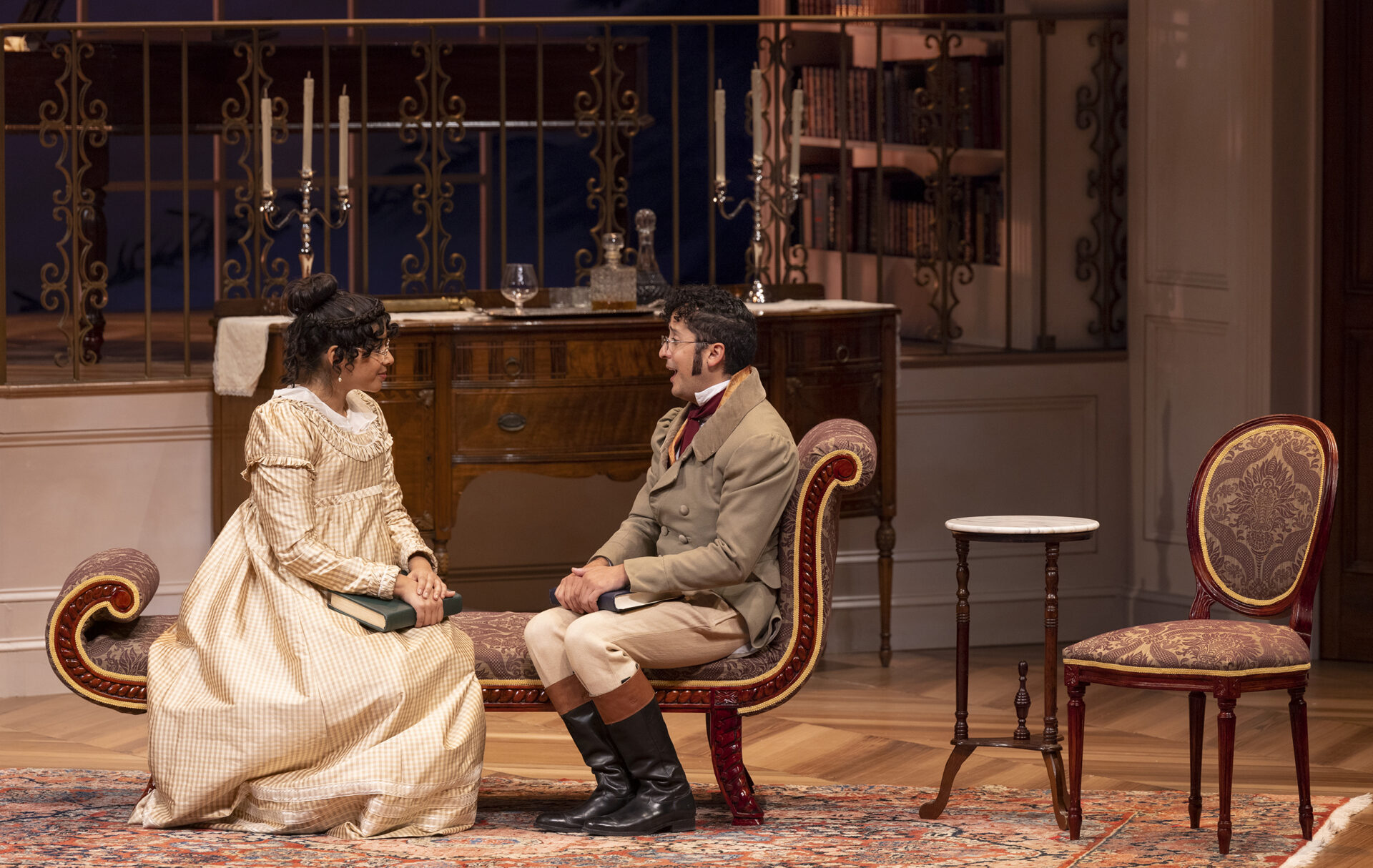
What is it about Jane Austen?
Is it the setting, England during the Regency, where a prince instead of a king ruled and empire waist dresses were introduced by another “Emma”?
Is it the language, where women speak up and men listen? Where irony and social commentary meld effortlessly together?
Is it characters like Elizabeth Bennet, Elinor Dashwood, Emma Woodhouse, and so many more women with a purpose and a determination to live their lives as they choose?
These are all superficial assumptions about why Jane Austen remains so popular nearly 200 years after her death. Maybe it is a combination of all of them, along with that “special sauce” of time and place that makes both Jane-ites and first-timers alike fall for her works. There are only six novels – Sense and Sensibility (1811), Pride and Prejudice (1813), Mansfield Park (1814), Emma (1815), Northanger Abbey (1818, posthumous), Persuasion (1818, posthumous), and Lady Susan (1871, posthumous) – but the number of adaptations (as well as works inspired by the framework Austen provided) for film, television, and stage make it seem as though there are so many more. Furthermore, her “sensibility” has inspired contemporary artists in all mediums – just look to the success of this summer’s Bridgerton as an example.
Scholars in all areas – history, literature, economics, sociology, and anthropology – have poured over Austen’s works, looking for clues about intention, what she thought of the world around her and what those words actually meant.
But at the end of the day, the subject at hand is THE STORY. What has delighted readers and viewers since her death has been the stories. Will Emma’s adventures ruin love for all with whom she comes in contact? Or will the Dashwood sisters balance sense with passion? So many questions!
One of the lingering questions that has intrigued readers and scholars alike at the end of Pride and Prejudice is exactly what happens to the Bennet family once the last lines are written. Austen gives us a bit about Lydia and Wickham, we have some clear resolution as to the happiness between Elizabeth and Darcy, and even a word or two about Lady Catherine. But Miss Mary Bennet? This is what Austen tells us:
Mary was the only daughter who remained at home; and she was necessarily drawn from the pursuit of accomplishments by Mrs. Bennet’s being quite unable to sit alone. Mary was obliged to mix more with the world, but she could still moralize over every morning visit; and as she was no longer mortified by comparisons between her sisters’ beauty and her own, it was suspected by her father that she submitted to the change without much reluctance.
And this is where Lauren Gunderson and Margot Melcon launch Miss Bennet: Christmas at Pemberley. Is Mary really no longer mortified by comparisons to her sisters’ beauty? Does she really moralize over every morning visit? And the biggest question of all: is she really the only daughter who remains at home?
Like any exemplary historians, literary scholars, and anthropologists, Gunderson and Melcon plumb the text of Pride and Prejudice not only for its hidden secrets but for inspiration, as they place us squarely into a world of possibilities with their take on the “what happens next” questions of the Bennet sisters. With each emotional beat and turn of phrase, they pick up the pen left by Jane herself.
As you watch the whirlwind of comings and goings at Pemberley, recall that there are so many assumptions about meaning, characters, and place – and what a “Jane Austen” story is. Embrace these characters for who they are, celebrate a world of high stakes and low consequences, and smile with joy as the story after the story comes alive.